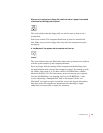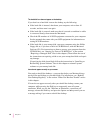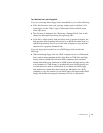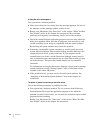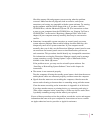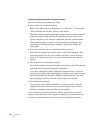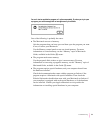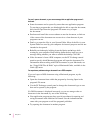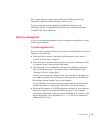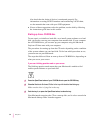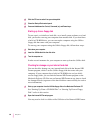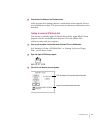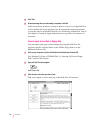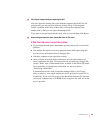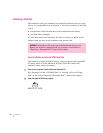
Note: Some characters that can be displayed on the Macintosh are not
accurately displayed on DOS computers, and vice versa.
For more information about working with DOS documents on your
Macintosh, see the “Using DOS Files & Disks” topic of Macintosh Guide,
available in the Guide (h) menu.
Repairing a damaged disk
If you see a message reporting that a disk is damaged or unreadable, you may
need to repair the disk.
Try these suggestions first
If you can’t start up from a hard disk or you don’t see the hard disk icon on the
desktop, try the following:
m If the hard disk is internal, shut down your Macintosh, wait at least 10
seconds, and then turn it on again.
m If the hard disk is external, make sure that it is turned on and that its cable
is connected firmly; then restart the Macintosh.
m If the hard disk is your startup disk, start up with a different startup disk.
(See the following sections, “Starting Up From a CD-ROM Disc” and
“Starting Up From a Floppy Disk.”)
If, after you start up from a different disk, your hard disk’s icon appears on
your desktop, reinstall system software on the hard disk (see “Installing or
Reinstalling System Software” later in this chapter).
If your hard disk’s icon does not appear on your desktop, you may need to
initialize the disk (see “Initializing a Hard Disk” later in this chapter).
m Check the ID numbers of all SCSI equipment connected to your computer.
Each device must have a unique ID number less than 7; the computer
itself has the ID number 7, and the internal CD-ROM drive (if there is one)
has the ID number 3. The ID numbers 0, 1, 2, 4, 5, and 6 are available for
additional SCSI devices.
63
Troubleshooting



